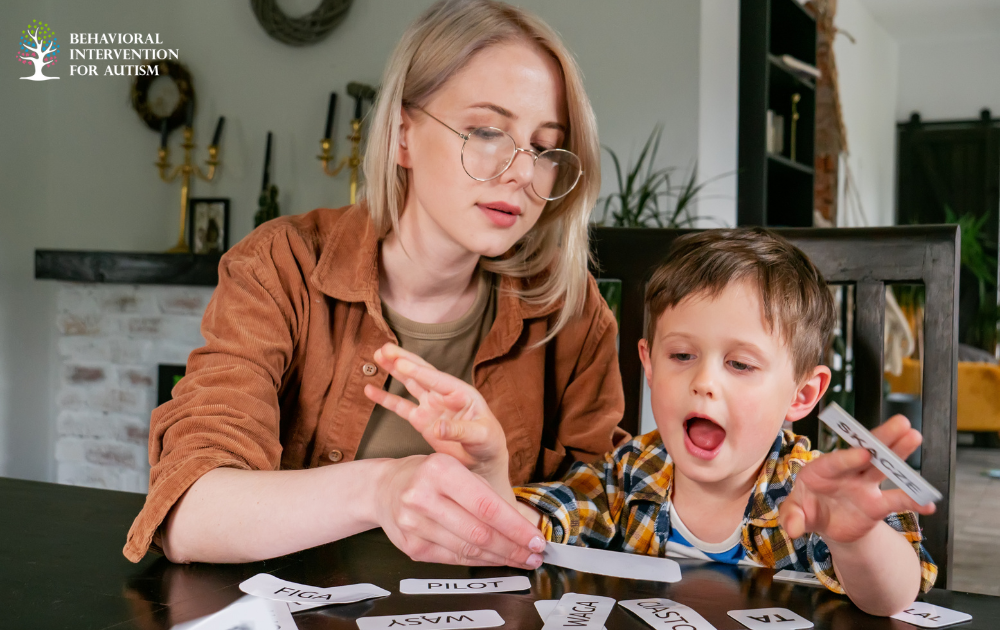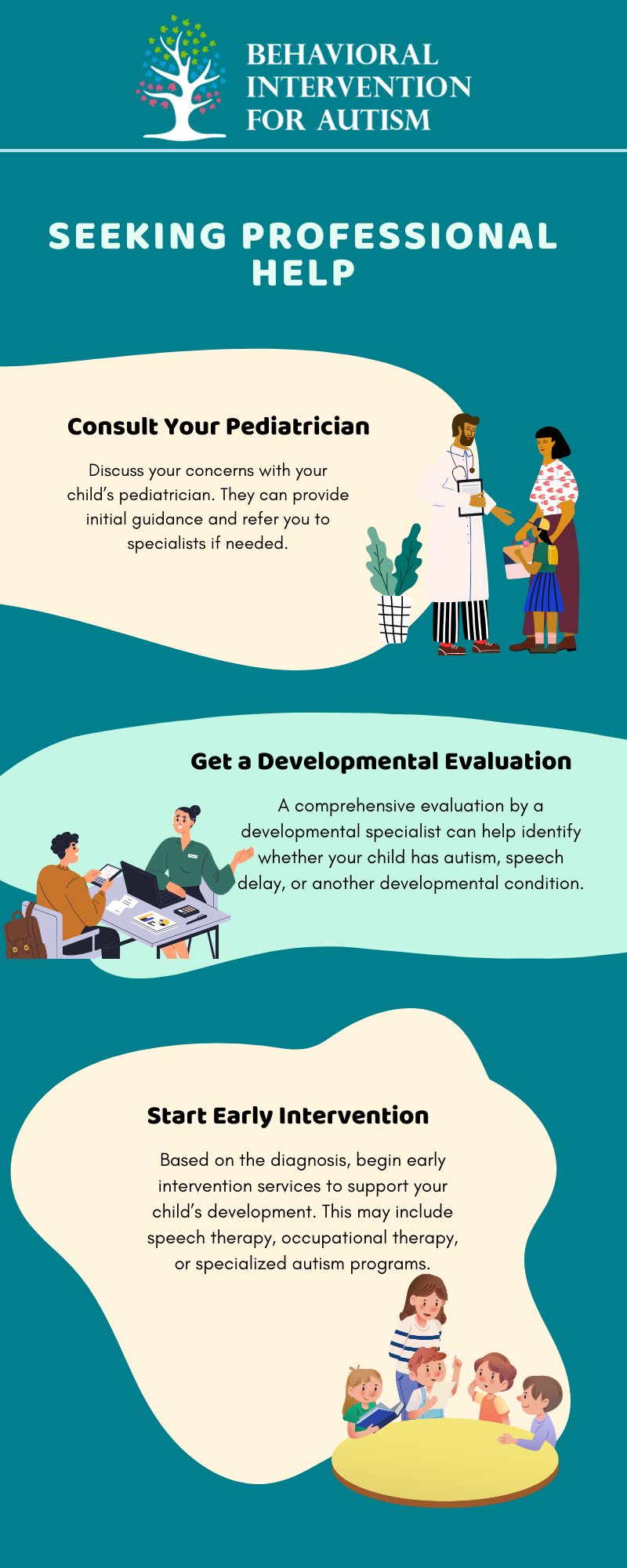
Table of Contents
Autism spectrum disorder (ASD) and speech delay are both conditions that can affect a child’s ability to communicate. Although they may seem similar at first glance, they are distinct in their nature, symptoms, and the interventions required. One effective intervention for children with autism is in home ABA therapy, which provides personalized support within the comfort of the child’s home environment. Understanding the differences between autism and speech delay is crucial for parents, caregivers, and educators to ensure children receive the appropriate support and intervention.
Understanding Autism Spectrum Disorder (ASD)
Autism spectrum disorder is a developmental disorder that affects communication, behavior, and social interaction. The term “spectrum” reflects the wide range of symptoms and severity among individuals with autism. Some children with autism may have severe communication challenges, while others may have milder symptoms.
Key Features of Autism
- Social Communication Challenges: Difficulty in understanding social cues, forming relationships, and engaging in typical social interactions.
- Repetitive Behaviors: Engaging in repetitive movements or routines, such as hand-flapping or lining up toys.
- Sensory Sensitivities: Unusual reactions to sensory inputs, such as sounds, lights, or textures.
- Delayed Speech Development: Some children with autism may have delayed speech, but this is just one aspect of the broader communication challenges they face.
Understanding Speech Delay
Speech delay refers to a condition where a child’s speech development is slower than typical developmental milestones. It is characterized by a delay in the ability to produce spoken language but does not necessarily involve other developmental issues.
Key Features of Speech Delay
- Delayed Speech Milestones: Not meeting typical milestones for speech development, such as babbling, first words, or combining words into sentences.
- Good Nonverbal Communication: Ability to use gestures, facial expressions, and other nonverbal forms of communication effectively.
- Age-Appropriate Play Skills: Engaging in play and activities appropriate for their age, without the repetitive behaviors seen in autism.
- Normal Social Interactions: Enjoying interactions with others and demonstrating typical social engagement.
How to Differentiate Autism and Speech Delay?
Differentiating between autism and speech delay involves looking at the broader range of symptoms and behaviors beyond just speech development. Here are some key factors to consider:
Social Interaction and Communication
Children with autism often have difficulties with social interactions and communication beyond just speech. They may not make eye contact, struggle to understand social cues, or have trouble forming relationships. In contrast, children with speech delays generally have normal social interactions and can use nonverbal communication effectively.
Repetitive Behaviors
Repetitive behaviors are a hallmark of autism. These can include repetitive actions like hand-flapping, or strict adherence to routines. Children with speech delay typically do not exhibit these repetitive behaviors.
Response to Sensory Stimuli
Children with autism may have unusual reactions to sensory stimuli, such as being overly sensitive to sounds or textures. This sensory sensitivity is less common in children with speech delays.
Play Skills
Children with autism often have restricted and repetitive play patterns. They might prefer playing alone and using toys in unconventional ways. In contrast, children with speech delays generally engage in age-appropriate play and enjoy interactive play with peers.
Developmental Milestones
While both conditions involve delayed speech, children with autism may also have delays in other developmental areas, such as motor skills or cognitive development. Speech delay, on the other hand, is more isolated to speech production.
Importance of Early Diagnosis and Intervention
Early diagnosis and intervention are crucial for both autism and speech delay. The earlier a child receives appropriate support, the better their chances of improving communication skills and overall development. Early intervention can significantly impact a child’s ability to communicate effectively, develop social skills, and achieve greater independence.
For Autism
Early intervention programs tailored to the child’s specific needs can help improve social communication, reduce repetitive behaviors, and enhance overall functioning. Applied Behavior Analysis (ABA), speech therapy, and occupational therapy are commonly used interventions. Additionally, early intervention can help address sensory sensitivities and develop adaptive skills, which are critical for the child’s daily living and long-term success.
For Speech Delay
Speech therapy is the primary intervention for children with speech delays. A speech-language pathologist can work with the child to develop their speech and language skills, using techniques tailored to their individual needs. Early intervention in speech therapy can also prevent potential learning difficulties and improve academic performance by enhancing language comprehension and expression skills at an early age.
Seeking Professional Help
If you suspect your child has either autism or speech delay, it’s important to seek professional help. A thorough evaluation by a pediatrician, speech-language pathologist, or developmental specialist can provide a clear diagnosis and guide appropriate intervention strategies. Here are the steps to take when seeking professional help:
Parental Support and Advocacy
Parents play a crucial role in supporting their child’s development and advocating for their needs. Here are some tips for parents:
Educate Yourself
Learn as much as you can about your child’s condition. Understanding the differences between autism and speech delay, and the appropriate interventions, will empower you to make informed decisions.
Collaborate with Professionals
Work closely with the professionals involved in your child’s care. Regular communication with therapists, teachers, and healthcare providers ensures consistency and effectiveness in the intervention.
Create a Supportive Environment
At home, create a supportive and stimulating environment that encourages communication and learning. Use everyday activities as opportunities to practice speech and social skills.
Join Support Groups
Connect with other parents who have children with similar conditions. Support groups provide valuable emotional support, practical advice, and a sense of community.
Conclusion
Differentiating between autism and speech delay is essential for ensuring children receive the appropriate intervention and support. By understanding the distinct characteristics of each condition, parents and caregivers can better advocate for their child’s needs and seek early intervention services.
Whether it’s through specialized programs for autism or targeted speech therapy for speech delay, early and tailored interventions can make a significant difference in a child’s development and quality of life.
For more information on ABA programs in Florida, contact us at Behavioral Intervention for Autism. Reach out today to learn more or book a session.
Sources:
https://stamurai.com/blog/speech-delay-vs-autism/
https://www.autismparentingmagazine.com/speech-delay-vs-autism/
https://www.eccm.org/blog/the-difference-between-speech-delays-and-autism
- 9 Common Obsessions of Children With Autism You Should Know - February 25, 2025
- What is Neurodiversity? A Guide to Embracing Differences - February 25, 2025
- Understanding Hyperfocus in Autism: What It Means and Why It Happens - February 25, 2025





